Iron-contaminated water is a problem that many families encounter when using well water for daily activities. There are many ways to recognize iron-contaminated water such as: fishy smell, cloudy water, red color, sour taste, yellow stains on water equipment after a period of use,… Below, Song Phung will help you learn more about simple and effective ways to treat iron-contaminated water.
What is alum contaminated water? How to identify alum contaminated water
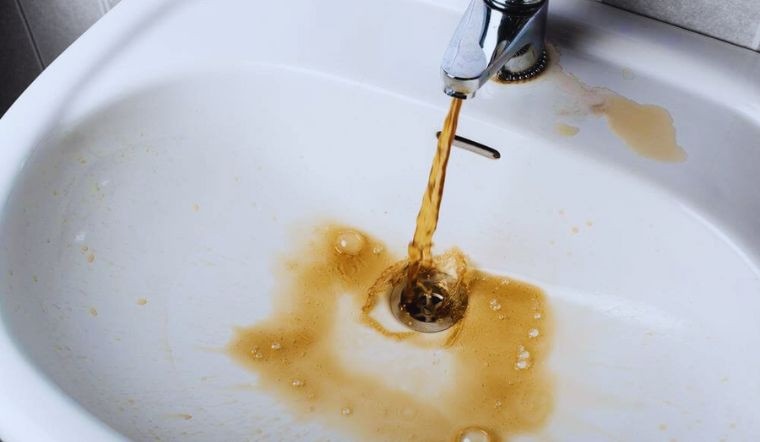
Iron-contaminated water is a phenomenon of water that is cloudy yellow, has a slightly fishy smell, and tastes slightly sour. When this water is left in a bucket for 10-15 minutes, the phenomenon of water precipitation occurs, a layer of scum appears on the surface of the water with a brick yellow color. Indicators to evaluate the quality of the water source such as: water hardness, TDS, pH exceed the allowable level.
The water has a slightly sour taste, low pH, yellow scum floating on the surface, and yellow stains on clothes when washing, that means the water is contaminated with alum.
Find out the details: Instructions On 3 Simple Ways to Identify Alum contaminated Water at home
Causes of alum contamination in water
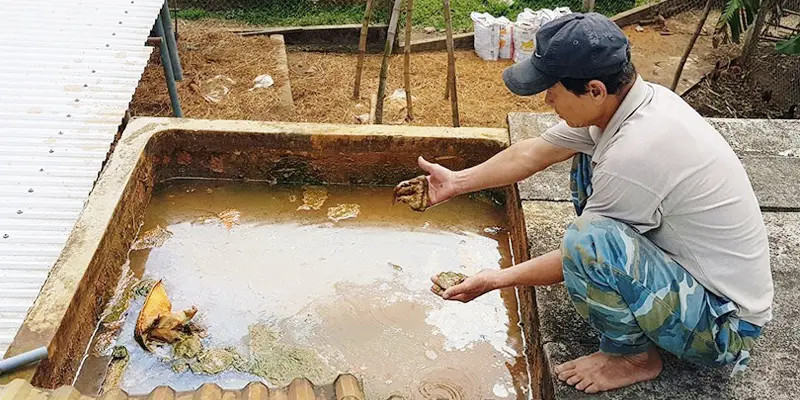
-
Characteristics of acid sulfate soil: This often occurs in the plains, iron water pipes will rust and corrode faster when containing acid sulfate water for a period of time.
-
Polluted water sources: This seriously affects groundwater, leading to water quality and the possibility of contamination with harmful impurities such as lead, H2S, ammonium, nitrite, arsenic, etc., affecting human health.
-
High sulfate anion content in water: Alum is formed from cations of 2 metals with different valences and sulfate anion SO4-2, which are double salts with 8-sided isomorphic crystals. High sulfate anion content in water exceeding the allowable level will cause the water source to be contaminated with alum
.
The effects of alum contaminated water on health
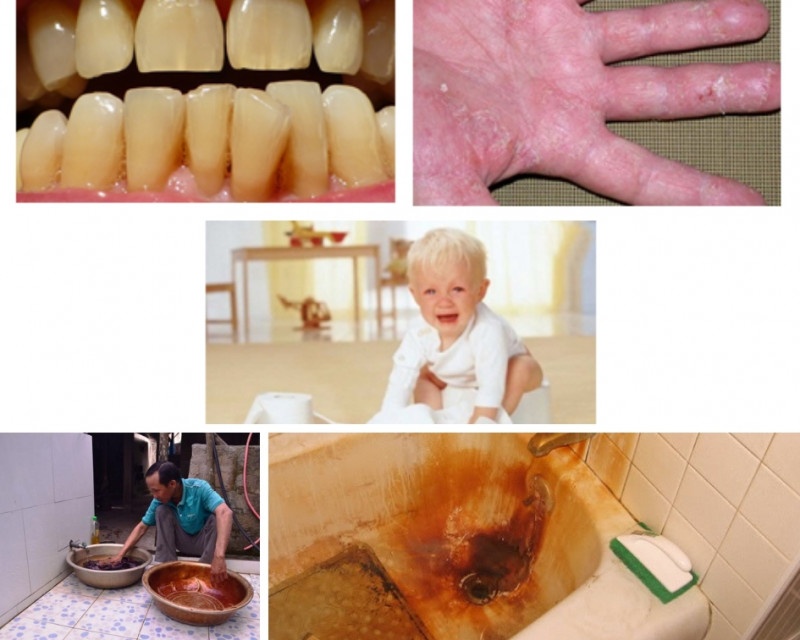
Using alum-contaminated water for a long time without treatment will lead to many health hazards such as:
- Dysentery: Severe diarrhea, abdominal pain and fever.
- Typhoid: Rash, headache, abdominal pain and fever.
- Hepatitis A: Jaundice, nausea, diarrhea, fever, more severe can cause acute liver failure.
- Cholera: Diarrhea, dehydration, vomiting, abdominal pain, fever.
- Other health effects: Flaky skin, inflammation, dry hair, yellow teeth.
Using alum-contaminated water for a long time can cause the risk of chronic diseases, even cancer because the water source contains bacteria and heavy metals such as:
- Arsenic: Increases the risk of skin or lung cancer.
- Nitrate: Base is dangerous to the health of all ages, especially infants under 6 months old.
- Mercury: Leads to central nervous system disorders.
- Sulfate: Diseases related to the digestive tract such as diarrhea, dysentery
Other harmful effects of alum contaminated water on daily life
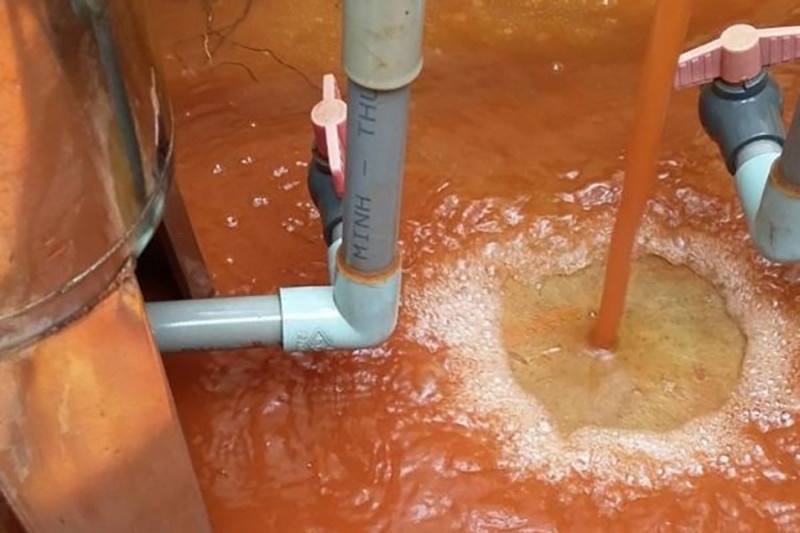
Not only affecting the health of users, alum-contaminated water also has many harmful effects in daily life such as:
- Using alum-contaminated water to wash clothes will cause discoloration, yellow stains, roughness and quick deterioration.
- Alum-contaminated water causes rust, sediment, yellow stains and corrosion of tools and containers, especially metal utensils.
- Alum-contaminated water causes changes in taste, color and deterioration of food.
- When plants come into contact with alum-contaminated water, it can cause pests and diseases, killing plants, especially flower crops.
See more: How does Water Softeners help Prevent Itching after Shower
The most effective way to treat alum water
The harmful effects of alum-contaminated water require you to take measures to overcome and handle this situation. Below are some ways to treat alum-contaminated water that you can refer to:
How to filter alum water with kitchen ash
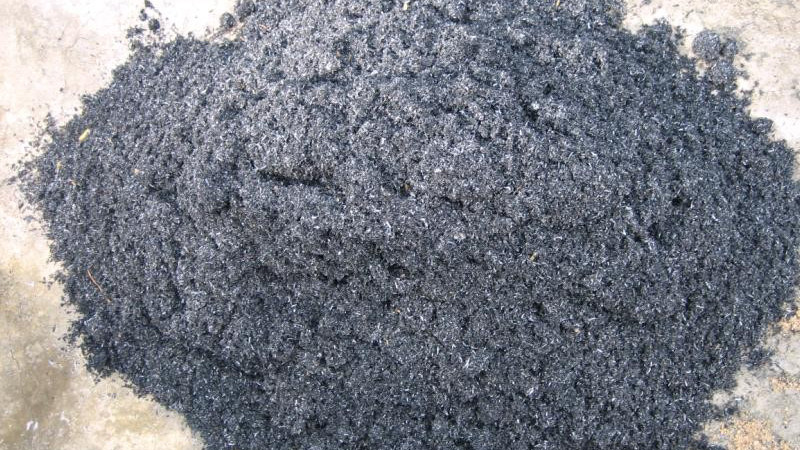
Wood ash is very useful and extremely easy to find. First, you put 5 – 10g of wood ash into the water basin that needs to be de-aluminate, let it rest for about 15 – 20 minutes. The wood ash will remove insoluble iron compounds and obtain clean water. When the reaction is finished, the wood ash and harmful substances will settle to the bottom of the basin, you can filter the clean water above and use it
Treatment of alum water with iron-reducing lime
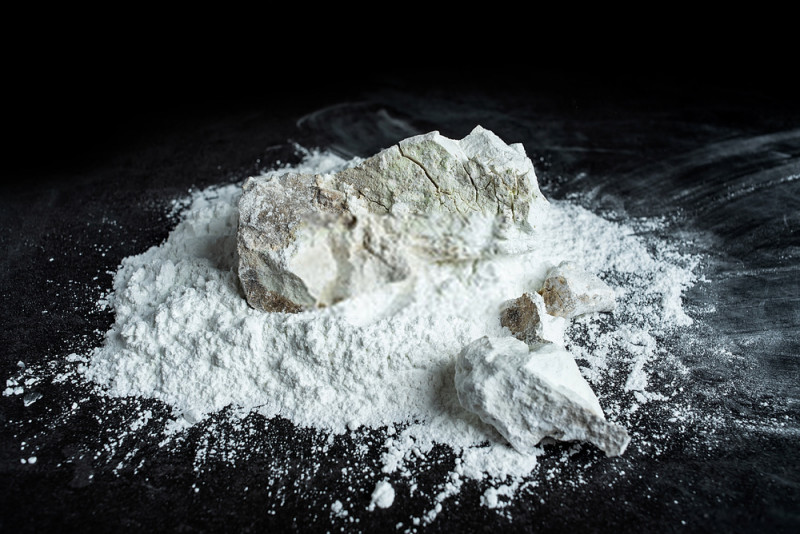
To filter alum water, add lime to the water basin that needs to be de-aluminate and wait for about 15 – 20 minutes. A chemical reaction will occur to remove the iron in the water and provide alum-free water.
Under OH- ion-rich conditions, Fe2+ ions hydrolyze to Fe(OH)2 which precipitates, replacing the standard redox of Fe(OH)2/Fe(OH)3 which decreases, creating conditions for (Fe2+) to transform into (Fe3+).
This method is quite popular because of its simplicity and convenience.
How to treat alum water with chemicals
Strong oxidizing chemicals used to treat alum water such as potassium permanganate, chlorine, ozone, iodine solution,… to reduce aluminum alum or iron (Fe2+) in wastewater treatment, which some units apply quite effectively in the form of dissolved in water to form (Fe3+), specifically Fe(OH)3, which precipitates and settles to form residue.
However, this method also has many limitations such as unpleasant odors, uncontrolled flow leading to excess chemical content affecting health or buying poor quality products leading to undesirable treatment results.
Clearing method
It is a simple but extremely effective method, suitable for all users from families, small and medium-sized companies to large-scale enterprises.
Rain rig
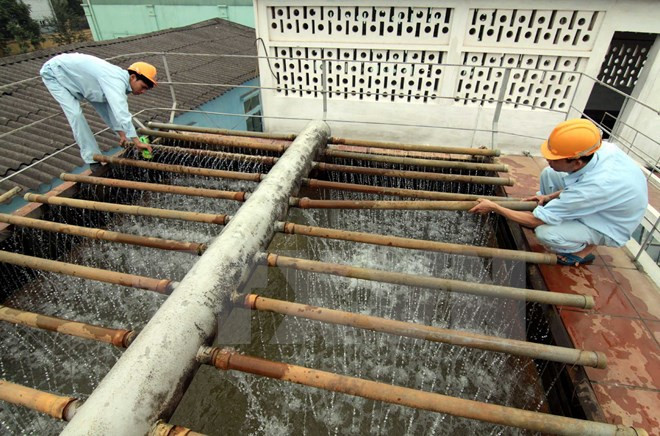
Rain racks can be created by punching holes in PVC pipes every 3cm, covering one end of the pipe and letting water flow from the punched holes into the filter tank. Rain racks make water come into contact with the air to receive oxygen from the air to remove manganese, iron and raise pH.
Gas mixing ejector
The gas mixing ejector is a vacuum generating device using the Venturi principle. The water increases its speed through a narrow area, reducing the pressure. The gas pushed into the ejector will be mixed evenly with the water when it goes out. Thanks to that, some heavy metals such as manganese and iron with a valence of 2 react with oxygen to become a valence of 3.
Oxidation tower
The oxidation tower makes water react quickly with oxygen to create precipitation, raising the pH. High-load oxidation towers are widely used in projects with high water flow such as schools, companies, hospitals, etc. Thanks to the radiator system combined with the exhaust fan, the oxidation tower is an excellent choice for industrial water treatment.
Using rough filter tank system
Rough filter tanks have been used for a long time to treat alum-contaminated water. The tank is built with 3 compartments: settling, filtering and storage. The settling compartment has the largest volume and the compartment with the smallest volume is the filtering compartment. Water will be pumped to the settling compartment, flow through the filtering compartment, here using some filtering materials such as: activated carbon, sand, gravel, … clean water will flow into the storage compartment for use.
Using alum filter column
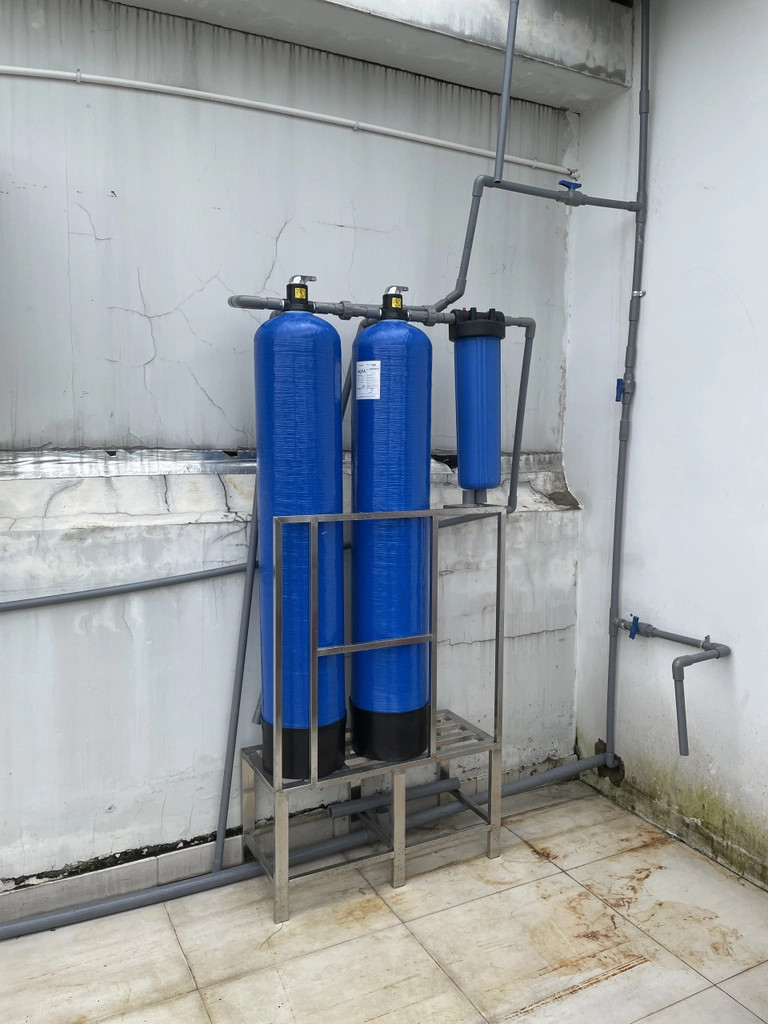
This is the most optimal method of treating alum, with a relatively affordable price and efficiency of up to 90%. This method uses specialized filter columns with a maximum osmosis mechanism of contact surface through materials to increase the efficiency of treating alum water. Importantly, the filtering capacity is quite high, suitable for households, factories, companies,… used in daily life and production.
Plastic filter column
Plastic filter columns are quite popular today for families. Besides the ability to be flexible in terms of assembly location, the filter column is also affordable, has a simple flushing mode and just needs to turn the valve to push out alum impurities.
Composite filter column
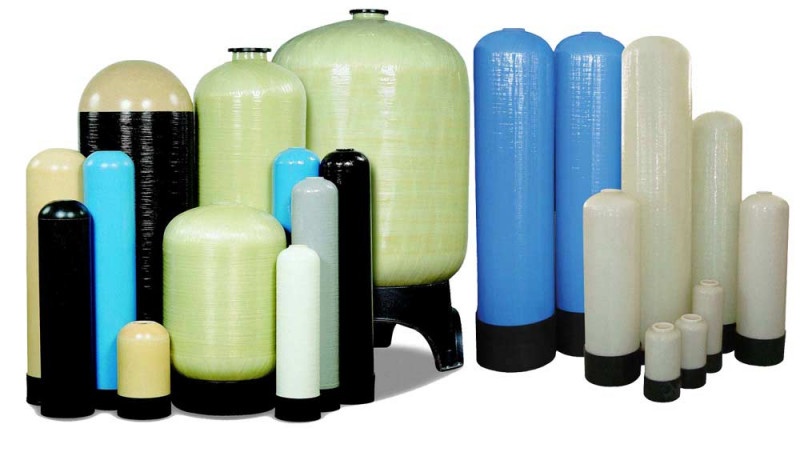
Composite filter columns are devices containing filter materials such as: cation beads, quartz sand, activated carbon, brim beads, manganese sand,… for medium and large water filtration lines. Composite filter columns are super hard, resistant to chemical corrosion reactions of seawater, acids, chemicals, and do not warp or rot.
Stainless steel filter column
Stainless steel filter columns are specialized in water filtration systems, containing a number of water filtration materials such as: activated carbon, cations, supporting gravel, quartz sand, manganese sand, etc. Stainless steel filter columns are made from 100% stainless steel sus 304, extremely durable with a lifespan of over 10 years, the columns are cylindrical in shape with many different sizes.
See more:
Water purifier
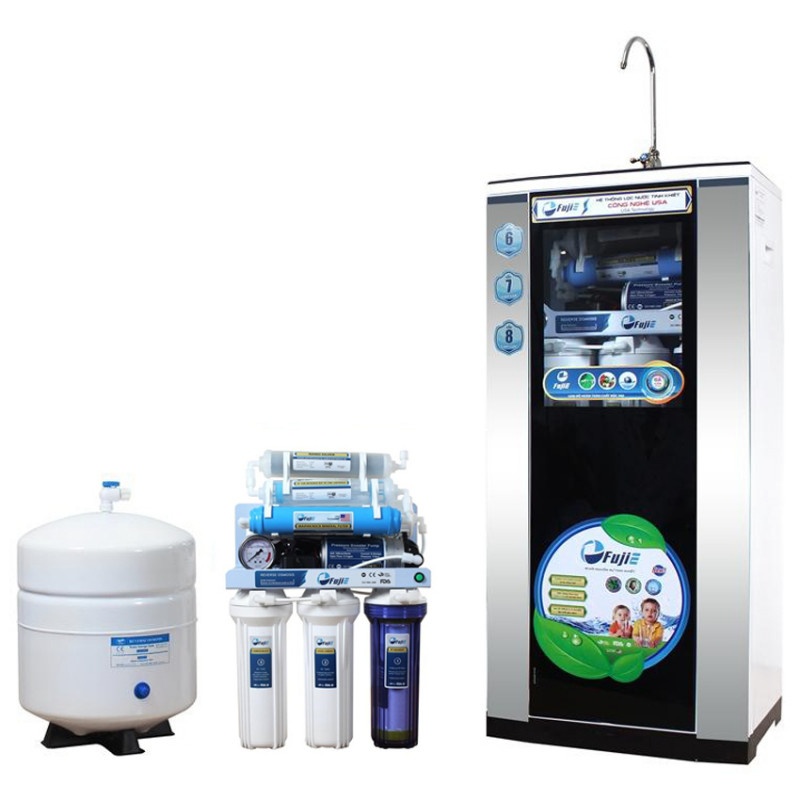
Water purifier is one of the safest alum water treatment devices today, completely removing iron alum, viruses, and bacteria. Currently on the market there are many extremely effective alum water filtration technologies such as: RO, Nano, UF technology. Each technology will have its own characteristics, depending on the needs, we can choose a suitable water purifier.
Refer to products: Direct drinking water filter, convenient for family
Address to buy and install reputable water filtration system
Song Phung is proud to be one of the leading prestigious brands in the field of iron-contaminated water treatment equipment. We are committed to bringing you high-quality water filtration systems and excellent customer service.
If you are looking for a reputable address to buy and install a water filtration system, Song Phung is a reliable address for you to put your trust in. With many years of experience and a team of reputable experts, we have built a solid reputation in providing effective solutions for treating iron-contaminated water.
Song Phụng offers a wide range of alum water treatment solutions, from compact home water filtration systems to larger solutions for businesses and organizations. We always use the most advanced technology and high-quality components to ensure system performance and durability.
You can contact us by phone at 0913 907 274 – 0984 620 494. Our team of professional consultants will be happy to help you choose and advise on solutions that suit your needs.
Some other services at Song Phung:


